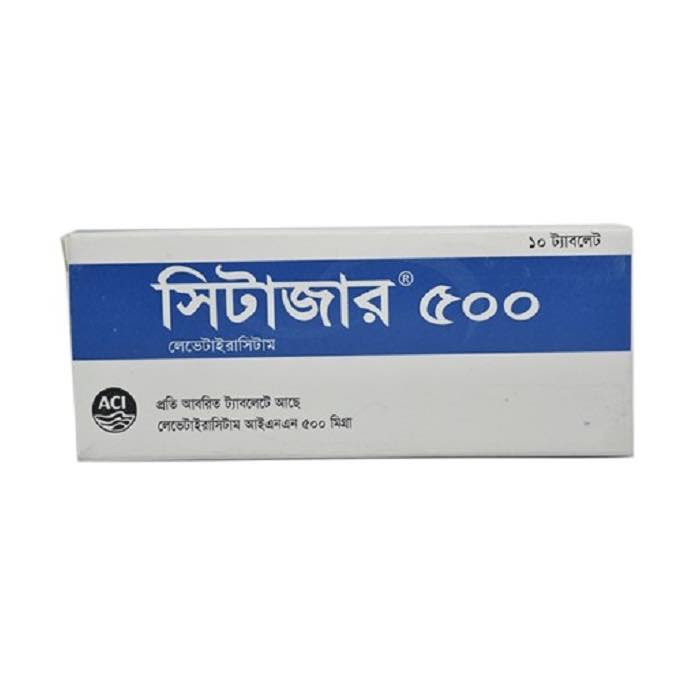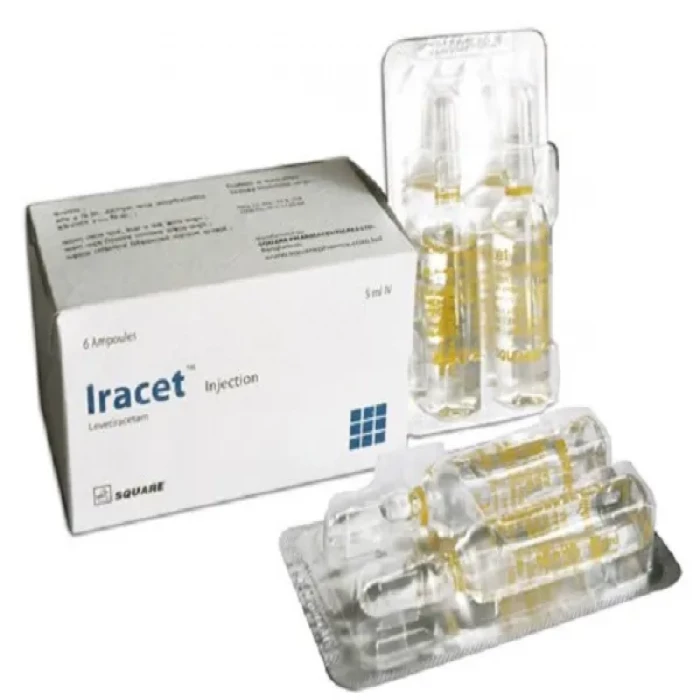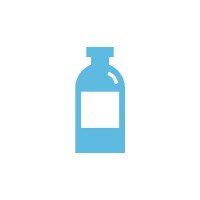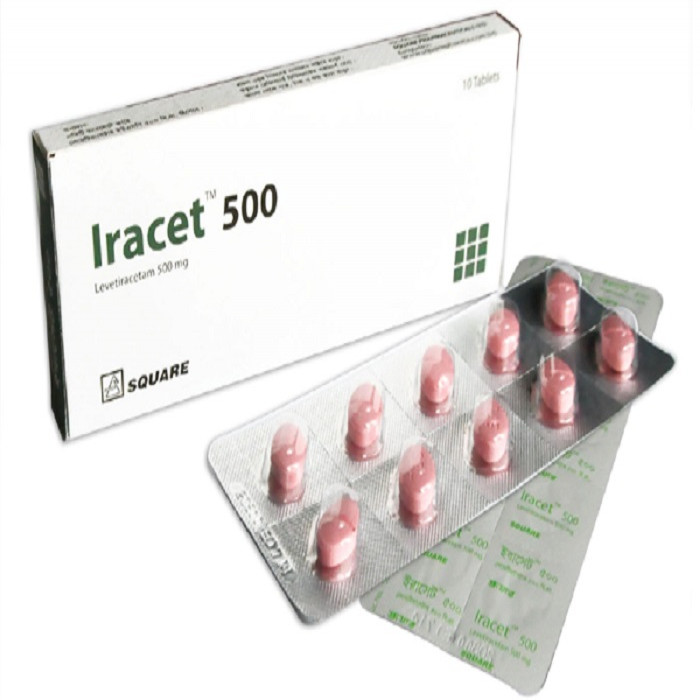
✔ 100% Authentic Product
👁️ Currently Viewing 1815
✅ Description:
Epicet 500 is an anti-epileptic medicine used to treat seizures (fits) in epilepsy. It can be used alone or along with other medicines. It helps to prevent seizures for as long as you continue to take it. Epicet 500 suppresses the abnormal electrical activity in the brain. You can take it with or without food but try to take it at the same time each day to get the most benefit. The dose will depend on your condition and how you respond to the medicine. Your doctor will advise the right dose for you. It is generally advised as a long-term treatment. You should continue taking it for as long as your doctor has told you to, even if you feel well. If you stop or miss doses your seizures could get worse. Some common side effects of this medicine include dizziness, headache, infection, irritation, nasal congestion (stuffy nose), sleepiness, aggressive behavior, and decreased appetite. You may also experience behavioral changes, aggressive behavior, irritation, agitation, etc. Side effects are more common during the first few weeks and usually lessen as your body gets used to the medicine. Most of these side effects do not need medical attention, but some of them can be serious. A small number of people being treated with this medicine have had thoughts of harming or killing themselves. Contact your doctor if your mood changes for the worse. Before taking it, you should tell your doctor if you have kidney problems, depression or suicidal thoughts and if you are pregnant, planning to become pregnant, or breastfeeding. Your doctor may suggest regular blood tests to monitor your kidney function frequently while taking this medicine.
Uses of Epicet 500
- Epilepsy/Seizures
Side effects of Epicet 500
Common
- Sleepiness
- Dizziness
- Fatigue
- Headache
- Decreased appetite
- Behavioural changes
- Aggressive behavior
- Irritation
- Agitation
- Nasal congestion (stuffy nose)
- Infection
How to use Epicet 500
Take this medicine in the dose and duration as advised by your doctor. Swallow it as a whole. Do not chew, crush or break it. Epicet 500 may be taken with or without food, but it is better to take it at a fixed time.
How Epicet 500 works
Epicet 500 is an antiepileptic medication. It works by attaching to specific sites (SV2A) on the surfaces of nerve cells. This suppresses the abnormal activity of the nerve cells in the brain and prevents the spread of electrical signals that cause seizures.

Quick Tips
- Epicet 500 should be taken regularly as directed by your doctor as missing doses can trigger seizures.
- Do not change the brand of your medicine and make sure that you have sufficient amount of medicine present with you.
- Some healthy tips to prevent seizures:
- It may cause sleepiness or drowsiness. If this happens to you, do not drive or use machinery.
- Do not stop using Epicet 500 without talking to your doctor, even if you feel better.

Brief Description
Indication
Partial seizures
Administration
May be taken with or without food. Oral soln may be taken directly or diluted in a glass of water.
Adult Dose
Oral Adjunct in seizures Adult: For partial seizures w/ or w/o secondary generalisation; myoclonic seizures (w/ juvenile myoclonic epilepsy); primary generalised tonic-clonic seizures (w/ idiopathic generalised epilepsy): Initially, 500 mg bid on the 1st day. Adjust dose in increments or decrements of 500 mg bid at 2-4 wk intervals. Max: 1,500 mg bid. Monotherapy for partial seizures with or without secondary generalisation Adult: Recommended starting dose is 250 mg bid, increased to an initial therapeutic dose of 500 mg bid after 2 wk. May further increase by 250 mg bid every 2 wk depending upon response. Max: 1,500 mg bid. Intravenous Adjunct in seizures Adult: For partial seizures w/ or w/o secondary generalisation; myoclonic seizures (w/ juvenile myoclonic epilepsy); primary generalised tonic-clonic seizures (w/ idiopathic generalised epilepsy): Initially, 500 mg bid on the 1st day. Adjust dose in increments or decrements of 500 mg bid at 2-4 wk intervals. Admin by infusion over 15 min. Max: 1,500 mg bid. Max duration: 4 days. Monotherapy for partial seizures with or without secondary generalisation Adult: Recommended starting dose is 250 mg bid, increased to an initial therapeutic dose of 500 mg bid after 2 wk. May further increase by 250 mg bid every 2 wk depending upon response. Admin by infusion over 15 min. Max: 1,500 mg bid. Max duration: 4 days. Hepatic impairment: Severe: Reduce dose by 50%.
Child Dose
Oral Adjunct in seizures Child: 1 to <6 mth Initially, 14 mg/kg daily, may adjust in increments of 14 mg/kg at 2-wk intervals. Max: 42 mg/kg daily; >6 mth <50 kg: Initially, 20 mg/kg daily, may adjust in increments of 20 mg/kg at 2-wk intervals. Max: 60 mg/kg daily. Intravenous Adjunct in seizures Child: 1 to <6 mth Initially, 14 mg/kg daily, may adjust in increments of 14 mg/kg at 2-wk intervals. Max: 42 mg/kg daily; >6 mth <50 kg: Initially, 20 mg/kg daily, may adjust in increments of 20 mg/kg at 2-wk intervals. Max: 60 mg/kg daily. To be given via infusion over 15 min.
Renal Dose
Renal impairment: ESRD patients undergoing dialysis: Loading dose of 750 mg, followed by 500-1,000 mg once daily; supplemental dose of 250-500 mg after dialysis. CrCl (ml/min) Dosage Recommendation <30 250-500 mg bid. 30-49 250-750 mg bid. 50-79 500-1,000 mg bid.
Contraindication
Hypersensitivity.
Mode of Action
Anticonvulsant used in the treatment of partial seizures. The precise mechanism of anticonvulsant effect is unknown.
Precaution
Renal and hepatic impairment; pregnancy, lactation; patients undergoing haemodialysis. If psychotic symptoms (eg hallucination) and behavioural symptoms (eg agitation, anxiety) occur, reduce dosage. Abrupt withdrawal may result in increased seizure frequency. May impair ability to drive or operate machinery during initial therapy. Lactation: Excreted in breast milk; not recommended
Side Effect
>10% Asthenia (11-15%),Headache (14-19%),Infection (11-15%),Increased blood pressure (17% in children < 4 years),Somnolence (11-15%),Drowsiness (2-23%),Fatigue (10-11%),Anorexia (3-13%),Weakness (9-15%),Nasopharyngitis (7-15%),Cough (2-11%) 1-10% Viral infection (2%),Asthma (2%),Dizziness (5-9%),Nervousness (2-10%),Amnesia (2%),Anxiety (2-3%),Ataxia (3%),Depression (2-5%),Hostility (10%),Paresthesia (2%),Sinusitis (2%),Diplopia (2%),Amblyopia (2%),Conjunctivitis (2-3%),Albuminuria (4%) <1% Abnormal hepatic function tests,Dyskinesia,Eczema,Neutropenia,Decreased hematocrit,Leukopenia,Suicidal tendencies,Hepatitis,Pancreatitis,Bone marrow suppression,Epidermal necrolysis
Interaction
Enzyme-inducing antiepiletic drugs.
⚠️Disclaimer:
At ePharma, we’re committed to providing accurate and accessible health information. However, all content is intended for informational purposes only and should not replace medical advice from a qualified physician. Please consult your healthcare provider for personalized guidance. We aim to support, not substitute, the doctor-patient relationship.










